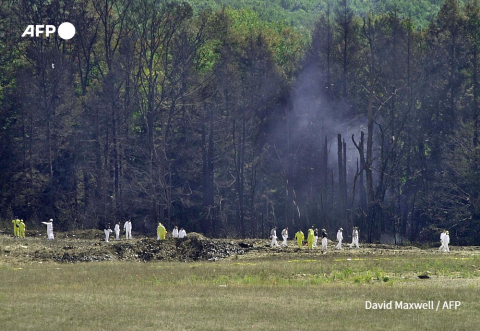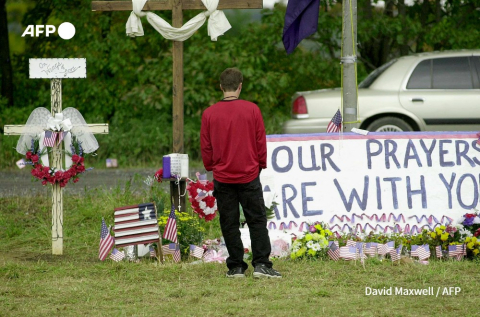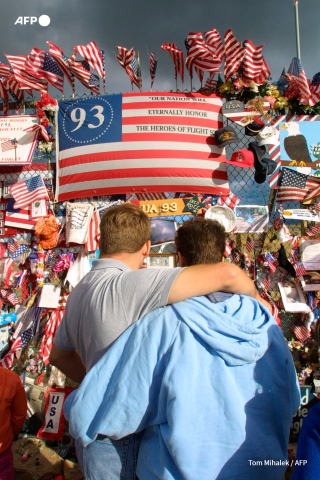Aboard Flight 93, heroes confront hijackers

United Airlines Flight 93 was the only one of the four planes hijacked by Al-Qaeda on September 11, 2001 to miss its target, believed by investigators to have possibly been the White House.
It came at the cost of the lives of the 40 passengers and crew, some of whom bravely took on the four hijackers before the plane crashed in a field in Pennsylvania.
In this story, published two days after the attacks, AFP correspondent Michel Leclerq reports on what investigators had discovered about the final moments of the doomed flight.
NEW YORK, September 13, 2001 (AFP) - Passengers aboard United Airlines flight 93 fought with the hijackers before their Boeing 757 plummeted to the ground outside Pittsburgh, Pennsylvania, about 400 kilometres short of its target in Washington, US authorities believe.
The final, tragic moments of the (...) passengers and seven crew members were better known Thursday because of telephone conversations with loved ones and airplane contacts with air traffic controllers.
The United flight was one of four hijacked Tuesday in kamikaze missions, two of which crashed into the twin towers at New York's World Trade Center while a third demolished a slice of the Pentagon just outside Washington.
Flight 93 departed Newark, New Jersey (...) bound for San Francisco, California -- a nonstop flight on a large aircraft that was fully fuelled.

Just 90 minutes later air traffic controllers said the plane took a sharp turn and reversed course, toward Washington.
Shouts of "Get out of here" were heard over a microphone that was left open, then silence. And then again, shouting, scuffling and the same injunction, "Get out of here," in halting English.
When the microphone was turned back on, CNN television reported, passengers could not help but be aware of things gone awry. It was clear the pilot was no longer in the cockpit.
- 'Bomb on board' -
"This is the captain speaking," said a voice in broken English, according to reports.
"There is a bomb on board. Stay quiet, we are meeting their demands, we are returning to the airport."
It was then that Jeremy Glick, 31, called his wife, Lyzbeth, his brother-in-law Douglas Hurwitt told The Washington Post, and told her his plane had been hijacked by three knife-wielding Middle Eastern-looking men wearing red headbands and who carried a red box they said contained a bomb.
It was after Lyzbeth told her husband of the crash at the World Trade Center that he and his fellow passengers, huddled in the back of the plane, decided to act.
"They were going to stop whoever it was from doing whatever it was they'd planned," Hurwitt told the daily. "He knew that stopping them was going to end all of their lives. But that was my brother-in-law. He was a take-charge guy."
California executive Thomas Burnett, 38, called his wife, Deena, four times, telling her the hijackers had stabbed and seriously wounded one of the passengers.
He and some others "were going to do something" to stop the terrorists, he told her, before signing off.

Lyzbeth Glick, already on the phone with her husband for 10 minutes, had her father call the Federal Bureau of
Investigation on another line, enabling the authorities to listen in to the last 20 minutes of the call, which ended abruptly with "random noises and screams".
With dips and turns and a final nosedive, at 10:03 am Flight 93 disappeared off radar screens, crashing to the ground three minutes later in a field west of Pittsburgh, leaving a crater three metres deep.
- White House targeted? -
On Wednesday US authorities said the hijackers were likely targeting the White House with the aircraft, but were thwarted by heroes.
"The target was Washington, DC, a major target there," said John Murtha, a US Representative for the district where the plane crashed.
"I've concluded that there was a struggle on board and a heroic individual concluded, 'We're going to die, we might as well take it (the plane) down here'."
